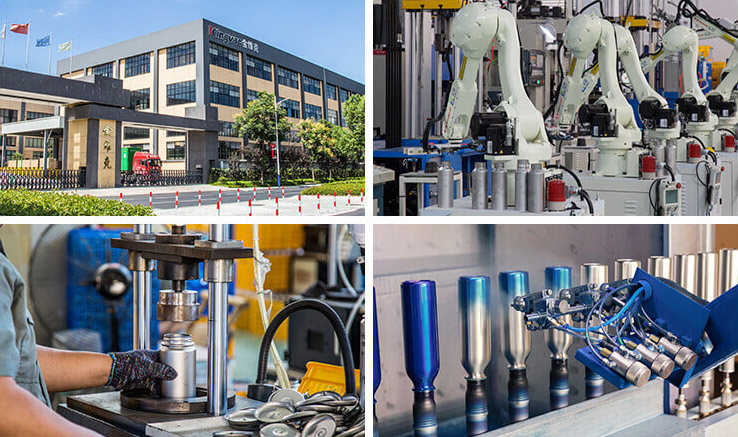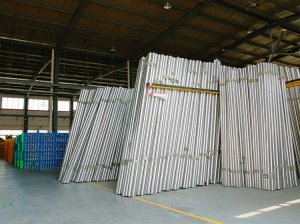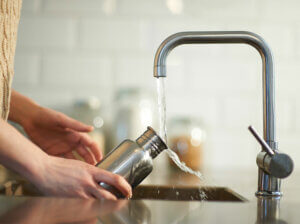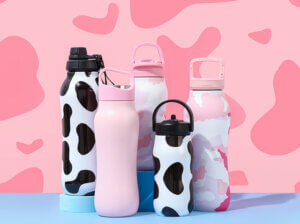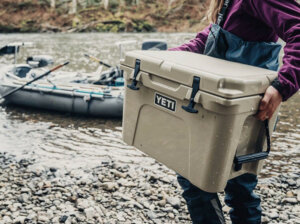Manufacturers in the food industry, such as water bottle manufacturers, have very strict requirements on the material of food grade stainless steel to avoid product contamination. Each custom stainless steel plate needs to be precise down to the smallest detail to ensure full compliance with food safety regulations.
What Is Food Grade Stainless Steel
With approximately 150 types of stainless steel on the market today, it is easy to make the mistake of choosing a finish that does not meet all FDA requirements. The various types of stainless steel may look similar, but what they can handle on a daily basis is very different.
In general, the surface of food-grade stainless steel is much less permeable and much rougher and smoother. These special forms of stainless steel must be able to withstand acids, alkalis, and chlorides such as salts, which are often introduced into the steel surface during processing.
For industrial food applications, where destructive corrosion is more common, production can choose to electropolish the stainless steel. This one-time treatment improves acid resistance and ultimately prevents corrosion that could lead to contamination.
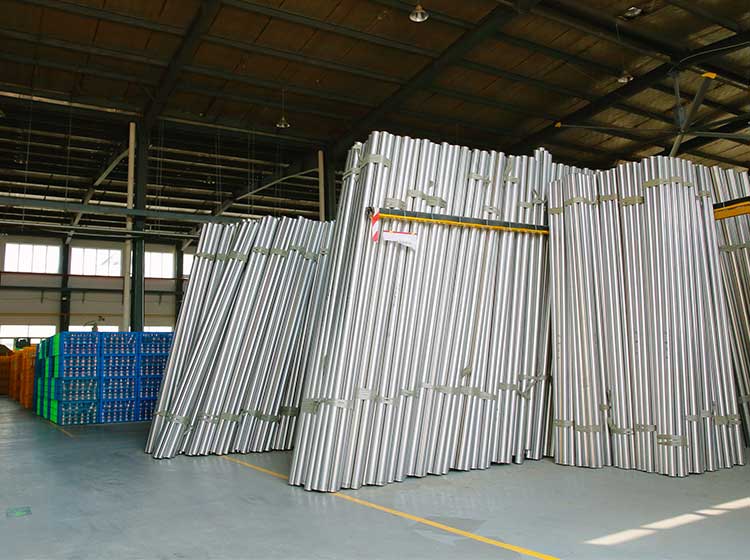
Characteristics of food grade stainless steel
Corrosion resistance
Compared with other metals, stainless steel is particularly resistant to corrosion and rust, making it ideal for use in the kitchen. Since most stainless steel grades have high corrosion resistance, you do not have to worry about the need for frequent replacement of equipment.
High strength
Food-grade stainless steel is strong and excellent for heavy equipment or shelving for storage areas.
Easy to clean
Other materials (such as wood or plastic) have grooves or openings where bacteria can invade and grow. Stainless steel is smooth and does not provide a place for bacteria to hide, so you can easily remove it.
Non-reactive surfaces
Stainless steel is a non-reactive metal, which means you can use it to cook acidic foods such as citrus, tomatoes and vinegar. Other metals (such as aluminum and iron) are reactive, and cooking acidic foods in these metals can affect the flavor and damage the surface of the metal.
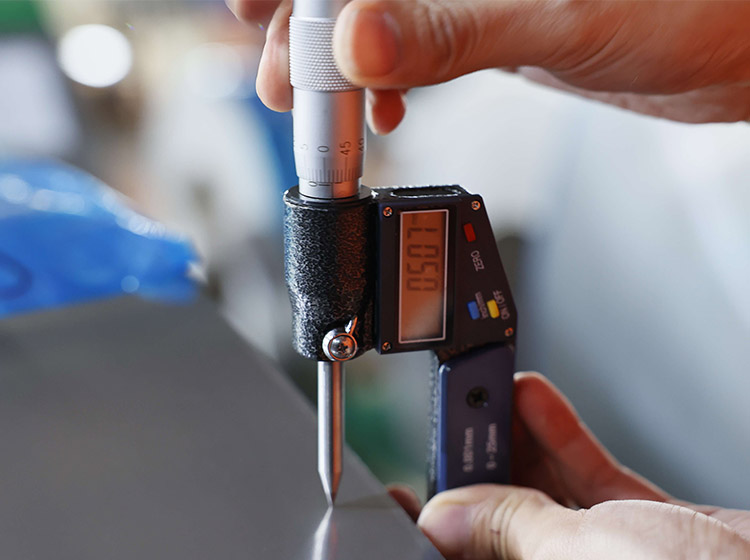
Stainless Steel Grades
There are many different types of stainless steel, and the differences between the different types can be significant. In order to better distinguish between the different types of stainless steel, they are divided into several grades. Many different grading systems are used in different countries and different environments. For the food service industry, you should be most aware of the SAE grades and food grades.
SAE Grades
This grading system is implemented by SAE International, an organization of engineers that develops standards for professionals in various manufacturing industries. In order to distinguish between stainless steel grades, their system uses integers to classify the different types. You may also see a grading system called the AISI system, which originated from the American Iron and Steel Institute, although it has now been updated and monitored by SAE International.
Food Grades
This system uses ratios (e.g. 18/0, 18/8, and 18/10) to describe the nickel and chromium content of food grade stainless steel. Chromium and nickel are the two most important elements of stainless steel, as they affect the corrosion resistance, luster, and magnetism of the steel.
What kinds of food grade stainless steel are available
There are more than 150 varieties of stainless steel, each with different characteristics, which is why it is important to understand their variations. One type of food-grade stainless steel may be better suited for a particular task, so it’s particularly important to learn to distinguish between the different types. Understanding the differences between food-grade stainless steel grades and types can help ensure that you make an informed decision and purchase the best product for your needs.
200 series stainless steel
Compared to other types of stainless steel, 200 series stainless steel is lower quality and less resistant to corrosion. Due to the reasonable price, it still occupies a certain share of the market.
304 series stainless steel
304 series stainless steel is the most commonly used type. With its high chromium and nickel content, it has a bright luster. It is also very resistant to corrosion and rust, although it is susceptible to corrosion caused by exposure to salt.
316 series stainless steel
This is the second most common type of stainless steel, and the alloy also contains an element of molybdenum, which increases resistance to corrosion caused by salt and other chemicals.
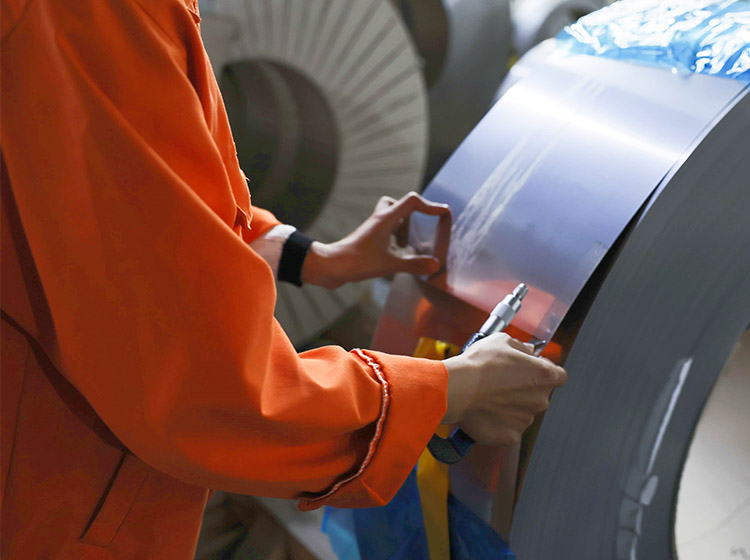
Conclusion
304 stainless steel is the most common type of food-grade stainless steel on the market today. In fact, 304 stainless steel accounts for more than half of the world’s stainless steel supply. This is because 304 stainless steel offers an excellent balance of price and performance. Its strong corrosion resistance and extreme durability combine to make it the standard choice for many industries.
304 stainless steel is a versatile material for most applications, and choosing 304 steel will almost always result in significant cost savings. On the other hand, if you make products that really need high corrosion resistance, or if you are looking for a higher quality stainless steel bottle, then 316 stainless steel would be a better choice for you.
insulated water bottle manufacturers
Everich is a leading stainless steel water bottles manufacturer in China for more than 20 years. We have rich experience in ODM&OEM orders and a creative design team, composed of 6 domestic and foreign designers. And Kingvac, a 100% owned factory by Everich, the stainless steel water bottles factory covers an area of more than 7,000 m² and has an annual bottle production capacity of up to 20 million bottles.
Everich’s stainless steel bottles are made of 304 and 316 food grade stainless steel to meet your needs for different projects. Both stainless steels are food-grade and have strong corrosion resistance, acid and alkali resistance, and toughness. While the vast majority of our clients may choose the cost-effective 304 material, we can also produce 316 stainless steel bottles if you need a higher-quality stainless steel bottle.
Please feel free to contact us and discuss custom wholesale stainless steel bottles and give us a trial order, we can also provide you with free samples.
